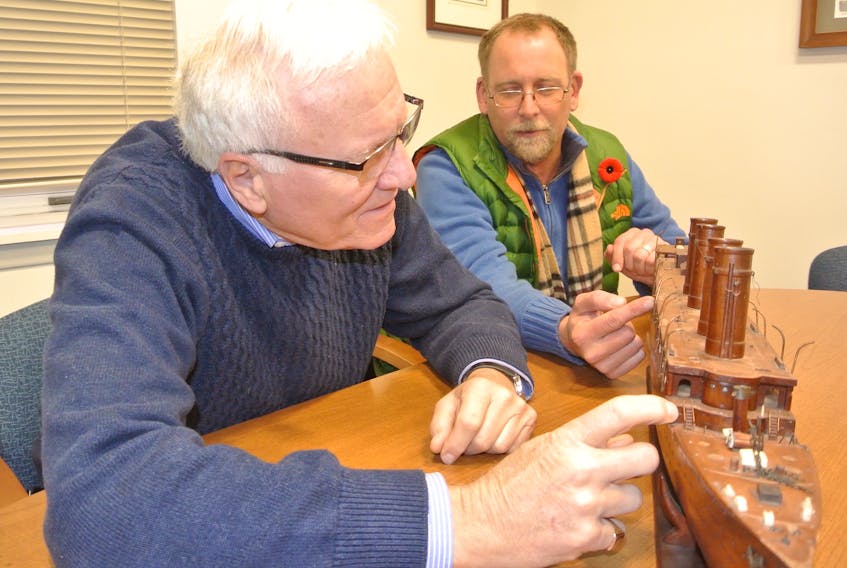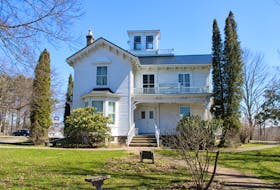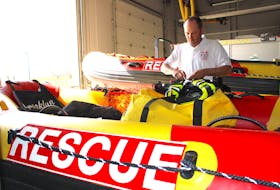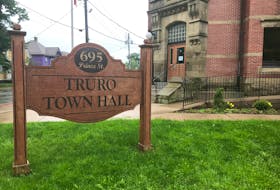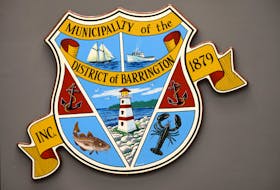AMHERST, N.S. – For decades, a wooden ship has sat in the homes of Cumberland-Colchester MP Bill Casey and his father.
Casey knows it as built by a prisoner of war at Amherst’s First World War internment camp, but he doesn’t know who built it, when it was built, or even what the ship is a replica of. Now, his nephew, Matthew, an accomplished woodworker, is restoring a piece of history more than a century old.
Casey now believes it's a model of the SS Kaiser Wilheim der Grosse, the ship a lot of the POWs at the Amherst camp were sailing on when captured.
“It’s been in the family for as long as I can remember,” Casey said. “It’s very intricate and very detailed. The workmanship is wonderful considering he probably had very few tools to work with.”
The internment camp in Amherst, located on the corner of Park and Hickman Street (where Casey Concrete is presently located), was the largest in Canada during the First World War. It operated from April 1, 1915 and closed in September 1919.
It was home to 853 prisoners of war, the most famous of which was Leon Trotsky, who was held from April 3, 1917 to April 29, 1917, and would go on to become the Minister of War for Russia and the founder of the Soviet Red Army.
There are many artifacts from the internment camp. Many of them are located at either the North Nova Scotia Highlanders Regimental Museum in the Col. James Layton Ralston Armoury or at the Cumberland County Museum. There are probably still items from the camp in households in Amherst.
Casey said there are likely many in Amherst who know little of the town’s connection to the First World War.
“I’ve talked to people who have no idea of this part of Amherst’s history,” the MP said.
The longtime MP, who will soon celebrate the 30th anniversary of his first election win in 1988, estimates the ship has been in the family for at least 70 years.
“My father had a commercial refrigerator and it had a big storage space underneath. That’s where he kept it. I think he planned on restoring it, but never got around to it. I started trying to restore it and made some lifeboats, but I have no idea what became of them,” Casey said.
Casey is amazed at the skill involved in building the boat.
“Even with the equipment available today it would be hard to do, can you imagine trying to build this a hundred years ago in a prison? It’s a work of art,” Casey said. “It has really deteriorated, but we’re going to restore it.”
Matt Casey said even he would have a difficult time building something with the tremendous detail of the model.
“Even with my modern workshop, I think I would have a hard time doing what the person who built this did,” Matt said. “The detail is staggering. There was even a railing across the top that looks like it was made from bone, or something like it. I wish I knew exactly what ship it was because I would like to restore it exactly back to what it was.”
Matt said he’s going to replace the rigging and railings as well as the bridge, the lifeboat cradles, intakes for the engines, the propellors and rudder.
The ship at one time had a pair of masts and a line of lifeboats on each side of the ship. Casey said there were once stairways and several buildings on the top deck along with rigging from the four stacks.
Over the years, the ship sat in various locations in Casey’s home as well as his father’s. He has no idea how the family acquired the ship, but it was common for POWs at the camp to trade handmade items to community members for things like tobacco and food.
“What would be really nice would be finding out who made it and whether he has any family somewhere, but that would likely be next to impossible. It would have been so nice to talk to the guy who made this.”
Casey said he and his nephew are going to research the ship as much as possible and he is hoping once it’s restored it can be displayed prominently somewhere in town as a part of Amherst’s history.
Twitter: @ADNdarrell

